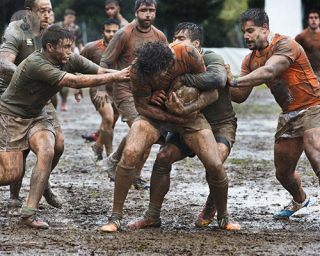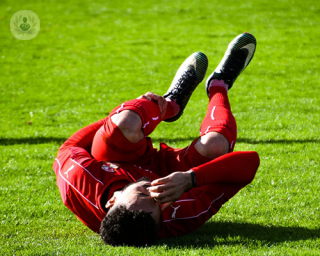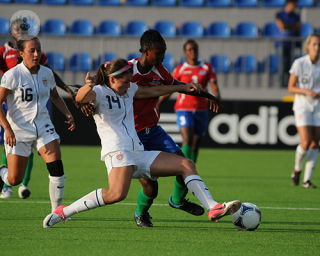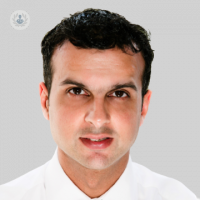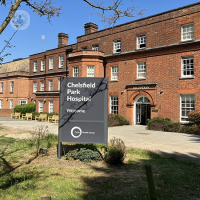Anterior cruciate ligament
Mr David Houlihan-Burne - Orthopaedic surgery
Created on: 11-13-2012
Updated on: 08-16-2023
Edited by: Carlota Pano
What is the anterior cruciate ligament?
The anterior cruciate ligament (ACL) is a bundle of collagen fibres that extends obliquely between the femur and the tibia. It inserts into the knee joint and, although small in size, it has a very important function. The anterior cruciate ligament (front) and the posterior cruciate ligament (back) cross each other forming an "X".

Function of the anterior cruciate ligament
The anterior cruciate ligament and the posterior cruciate ligament form the central axis of the knee, and allow the tibia to move over the femur. Its functions are to:
- Prevent the forward movement of the femur over the tibia.
- Give stability to the knee when rotating.
It is, therefore, the most important element in preventing anterior displacement of the tibia, by limiting tibia rotation and internal and external angulation of the knee when stretched.
Pathologies of the cruciate ligament
The cruciate ligament is the most frequently injured of all ligaments. Any sudden change in the direction of the knee, or sudden stops, can cause injury. As a result, it is a common sports injury. In fact, two-thirds of anterior cruciate ligament injuries are sports-related, with young people being the most affected. Some examples include landing awkwardly on the leg after a jump, or stopping abruptly when running.
These injuries occur more frequently in women since their anatomical characteristics are different to those of men; women have greater joint laxity, a wider pelvis that influences the external rotation of the tibia, and a smaller patellofemoral groove (where the anterior cruciate ligament is located in the knee).
One of the more serious injuries is rupture of the anterior cruciate ligament, which can cause instability in the knee and give the sensation of it not being able to support your weight, swelling of the joint, difficulty in supporting the leg or limited bending and stretching of the leg. There may also be a chronic anterior cruciate ligament deficiency as a result of a previous tear or elongation or stretching caused by a previous trauma to the knee.
When these injuries occur, whether rupture or chronic deficiency, they allow abnormal rotation and translation of the tibia. As a result, running and walking can damage the meniscus and cartilage. Osteoarthritis will develop if the bones and cartilage rub together without protection, resulting in pain and an inability to walk.
Treatments for anterior cruciate ligament pathologies
An anterior cruciate ligament injury cannot heal on its own. The orthopaedic surgeon will decide whether or not surgery is necessary.
Non-surgical treatment is usually recommended if:
- You are elderly and have a low level of physical activity.
- You have a good knee stability and do not engage in much physical activity.
- There are no other injuries that require further treatment, such as a torn meniscus, ligaments or cartilage.
Non-surgical treatment involves prolonged rehabilitation in order to strengthen the muscles of the quadriceps and hamstrings. A knee brace will also be needed for some sports activities or for walking. You may also need to change the type of sports you do as well as the level and intensity of the sports activities.
If these treatments are not suitable for you or your type of injury, then surgery will be recommended, which will enable the full recovery of the joint. Thus, people with a recent ligament tear and an active lifestyle, those with chronic ligament deficiency that destabilises the knee (damaging the meniscus and cartilage), and people with an anterior cruciate ligament tear who practice impact sports may be candidates for anterior cruciate ligament surgery. If they do not have surgery, they may be unable to return to their sporting activity due to the instability of the knee and possible associated injuries to the meniscus, ligaments or cartilage.
Anterior cruciate ligament surgery is usually performed using arthroscopy. This allows the injury to be approached through two or three incisions of less than 1 cm. The damaged ligament is removed, so it needs to be replaced with a graft. This graft will come from your own body, from the injured knee. The graft is inserted through a tunnel made in the tibia and the femur. The graft will heal to the bone tunnel several weeks after implantation, so the graft must first be fixed to it. This can be done using titanium screws (at the ends of the graft) or bioabsorbable screws, among others. The specialist will immobilise the knee after the operation. The next day you will be able to move the joint gradually. You are then ready to start rehabilitation sessions with a physiotherapist in order to restore mobility.
Which specialist treats anterior cruciate ligament pathologies?
Orthopaedic surgeons treat anterior cruciate ligament injuries.

